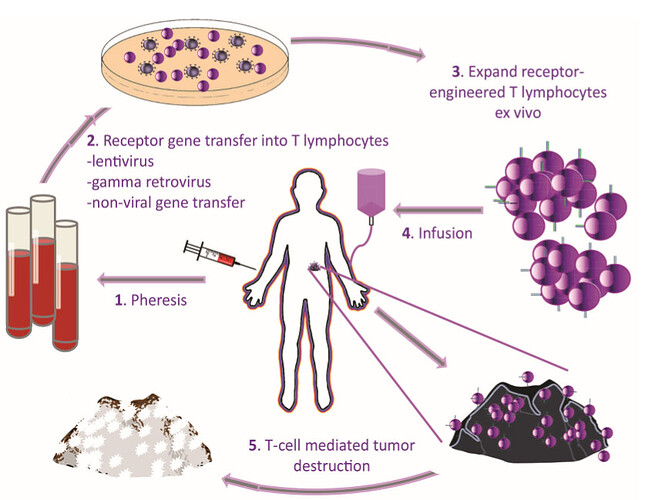TCR-T therapy: a new idea for the treatment of solid tumors
TCR-T therapy (T Cell Receptor-Gene Engineered T Cells) is a T cell therapy that is genetically engineered by cell receptors. By transducing chimeric antigen receptors (fusion antigen binding domain and T cell signaling domain) or TCRα/β heterodimers into ordinary T cells, the ability to specifically recognize tumor-associated antigens (Tumor Associated Antigen, TAA) can be improved The affinity of TCR and the combat effectiveness of immune cells enable T lymphocytes to re-recognize target cells efficiently and exert a strong anti-tumor immune effect in vivo. TCR-T therapy can not only kill tumors as quickly as chemotherapy, but also avoid the delayed effects of vaccines and T lymphocyte checkpoint therapy. TCR-T therapy is mainly used in the treatment of melanoma, liver cancer, ovarian cancer and other tumors.
In the treatment of solid tumors, TCR-T has achieved better therapeutic effect than CAR-T. Due to the ability of MHC molecules to present peptide chains obtained from cell surface and intracellular proteins, TCRs can target a wider variety of antigens than CARs. When TCR-T and CAR-T attack solid tumors at the same time, most of TCR-T can be combined with more tumor cells, and the drug distribution will be more balanced, while CAR-T usually attaches to the outer layer of the tumor and does not penetrate into the inside. The efficiency is low.
TCR-T cells stay longer in the human body
Since TCR-T is naturally expressed in the human body and fully humanized, it will not cause immune rejection in the body. At the same time, TCR-T cells have immune memory function and can survive in the body for a long time. As far as CAR-T is concerned, some artificial genetic modification will also consume and shorten the survival time of CAR-T objectively, affecting the treatment results.
Because TCR-T therapy has the advantages of being able to recognize intracellular and extracellular tumor-specific antigens, the effect of targeting solid tumors is more obvious, and the retention time in the human body is longer.











 Would be fun.
Would be fun.



 )
)